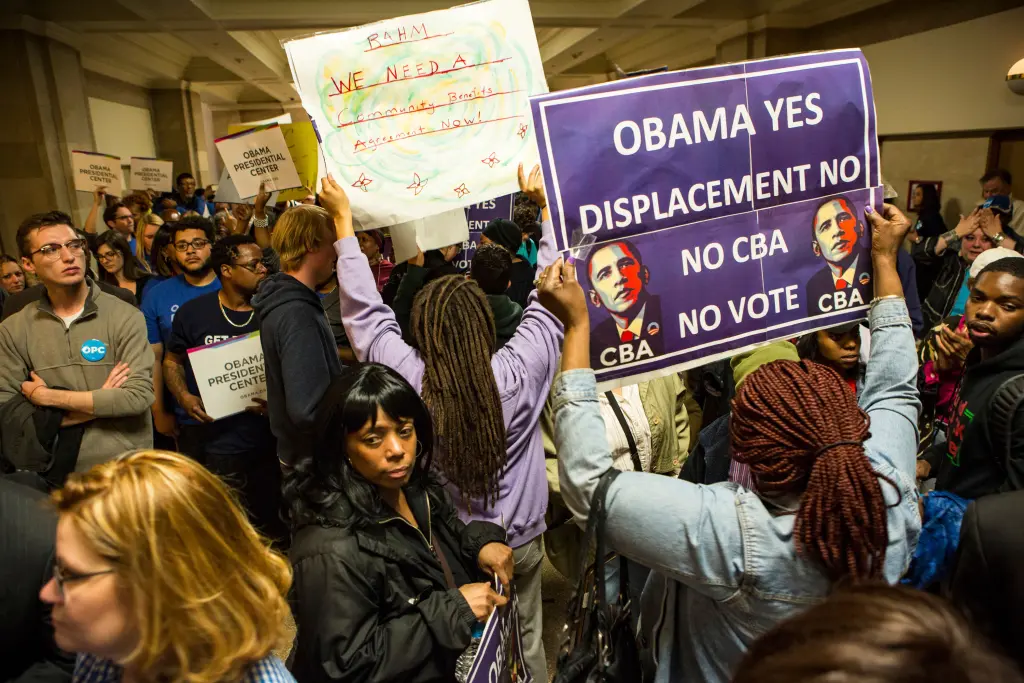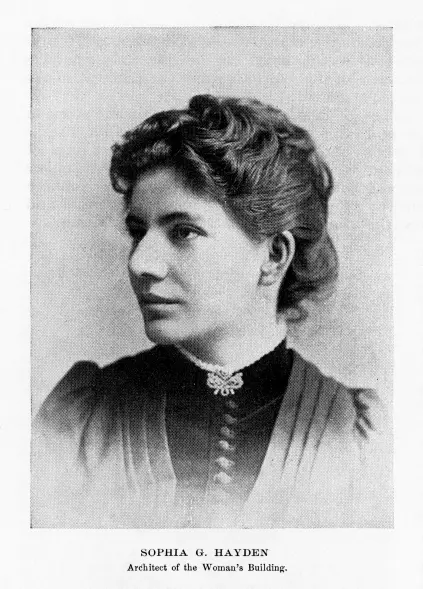How Barack Obama’s $850 million “Presidential Center” has triggered uproar after local landmark destruction and gentrification protests
The sprawling green space of Jackson Park on Chicago’s South Side was once framed by lagoons, tree-lined walks, and the legacy of the 1893 Columbian Exposition. Now, as cranes rise over the park’s historic canopy, the new Obama Presidential Center has become one of the most divisive projects in modern Chicago history. What was once imagined as a unifying monument to hope has turned into a lightning rod for controversy — with critics accusing former President Barack Obama of destroying a national landmark to build what some have derisively nicknamed “The Obamalisk.”
When the Obamas first announced in 2015 that Jackson Park would host the $850 million center, the decision was framed as poetic. The South Side was Obama’s old home turf — the place where his political career began, where he worked as a community organizer, and where Michelle Obama was raised. Choosing the area was meant to celebrate local roots and bring investment to a region that has long been overlooked. But for many Chicagoans, the vision has soured. Preservationists, activists, and longtime residents now say the Obama Foundation has permanently altered a historic public landscape for private glory.

The project, led by the Obama Foundation, promises to be more than just a presidential library. It’s designed as a sprawling 19-acre campus with a museum tower, athletic center, public library branch, gardens, and community spaces. Yet what was billed as “for the people” has increasingly been seen by opponents as something built over the people. Jackson Park, listed on the National Register of Historic Places and designed by famed landscape architect Frederick Law Olmsted, was a protected gem of Chicago’s park system. To critics, tearing up portions of it to make room for concrete plazas, underground garages, and towering architecture is nothing short of sacrilege.

Environmental groups and preservationists have fought the plan for years. Lawsuits by organizations like Protect Our Parks accused the city of unlawfully transferring public land to a private foundation. Though most legal challenges have since been dismissed, the controversy continues. The main complaint: the park’s integrity — its trees, greenways, and historical layout — has been compromised for a project that primarily serves Obama’s personal legacy. Detractors call the structure itself “brutalist,” a 225-foot stone-clad tower that some say looks more like a mausoleum than a beacon of inspiration.

Even among those who supported Obama’s presidency, the optics sting. “It’s like watching a piece of history be bulldozed,” one Chicago resident told local media. “We were promised jobs and opportunity, but what we see are fences and cranes — and a massive monument to one man.” The New York Post described the project as “a brutalist monument — to himself,” sparking a firestorm on social media.
The Obama Foundation insists otherwise. Officials argue the center is not a shrine but a public space that will drive tourism, jobs, and education. They claim the development is bringing $3 billion in economic benefits to the South Side, including 5,000 construction jobs and 2,500 permanent positions. The city has echoed that message, calling the project a symbol of progress and pride. Chicago Mayor Brandon Johnson praised it as “an investment in the people of Chicago that will reverberate for generations.”
But for nearby residents, those promises have a cost. The neighborhoods surrounding Jackson Park — Woodlawn, South Shore, and Hyde Park — have seen property values and rents soar since construction began. Two-bedroom apartments that rented for $800 a decade ago now list for $1,700 or more. Housing activists warn of displacement and “Obama gentrification,” arguing that long-time residents are being priced out of the very community the center was meant to uplift. Despite the city’s pledges to expand affordable housing and cap rent increases, many locals remain skeptical.

The Obama Center’s design has also split opinion. Designed by Tod Williams Billie Tsien Architects, the museum’s central tower rises starkly above the surrounding treeline — a minimalist, geometric slab intended to evoke “a hand reaching upward.” Admirers see it as modern, bold, and dignified. Critics call it cold and imposing. Some have compared it to Soviet-era architecture; others see it as an unnecessary monument to ego. “It’s not just big,” one architecture columnist wrote, “it’s domineering — a monument that demands reverence rather than invites reflection.”
Beyond aesthetics, the debate reflects deeper cultural tensions about legacy and power. When does a presidential library become an act of self-commemoration? And at what point does revitalization turn into erasure? These are the questions being asked not just in Chicago but across the country. In an era where cities are redefining how they preserve history and distribute resources, Obama’s project has become a case study in the costs and consequences of symbolic development.
Supporters of the former president argue that his critics are missing the point. Obama himself has said the center is about looking forward — not backward — and about creating a space that celebrates civic engagement rather than personal achievement. “This won’t just be a library of memories,” he told reporters, “but a living, breathing place where the next generation can learn how to change the world.”
Yet even that sentiment hasn’t softened the backlash. The destruction of over 700 mature trees in Jackson Park — many over a century old — has left environmentalists furious. The sight of cranes tearing through Olmsted’s carefully preserved landscape has become a rallying cry for preservationists nationwide. For them, the irony is striking: the man who campaigned on hope and change is now accused of permanently changing — and possibly damaging — one of America’s most historic parks.
The lawsuits have been settled, and construction continues. The Obama Foundation broke ground in 2021 and expects to open the doors by spring 2026. Still, the debates show no sign of slowing down. Community meetings remain packed with emotional testimony, balancing optimism and resentment in equal measure.
The legacy of the Obama Presidential Center will depend on perspective. To some, it’s a visionary symbol of renewal — a bold project that will transform the South Side into a destination for culture, learning, and pride. To others, it’s an unwanted monument to ego, carved out of a public treasure that should never have been touched. Between those two truths lies the uncomfortable question at the heart of the story: what does progress look like when it comes at the cost of history?
For now, Chicago waits and watches as the gray monolith climbs higher each month. When it opens, it will stand as one of the most expensive and ambitious presidential centers ever built. But whether it will be remembered as a gift to the people — or a scar on the city’s soul — will depend not on its architecture or price tag, but on how it lives up to the promise that started it all.

